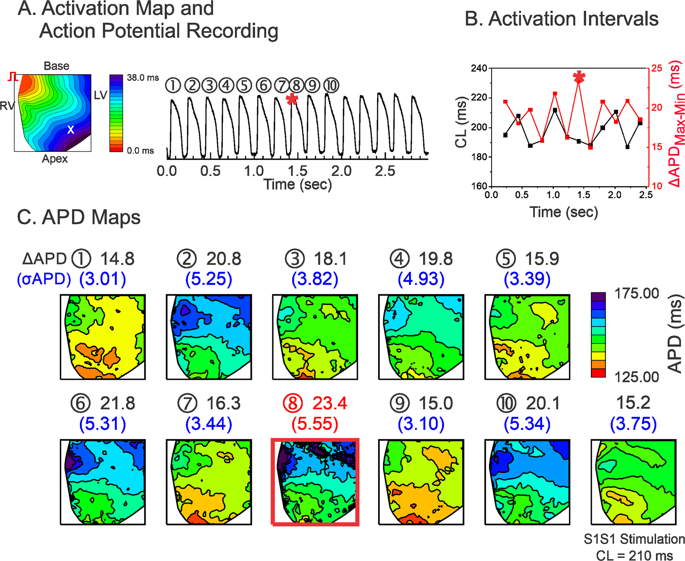Contents:


Collectively, journal entries are used to produce summary documents that support analysis and evaluation of the business and its finances. Working capital, cash flows, collections opportunities, and other critical metrics depend on timely and accurate processes. Ensure services revenue has been accurately recorded and related payments are reflected properly on the balance sheet. Reversing entries help prevent accountants and bookkeepers from double recording revenues or expenses.
In year 2001, Oceanic Advertisement Company rendered services only for 12 months from the total 20-month services it promised to give. Since the 8 months service is not rendered it should NOT be reported as revenue. As a result, using an adjusting entry, which debits the revenue account and credits the liability account, we transfer the unearned portion to the liability account. Some balance sheet items have corresponding contra accounts, with negative balances, that offset them. Examples are accumulated depreciation against equipment, and allowance for bad debts against long-term notes receivable. Journal entries are used to record transactions in accounting and are made in the company’s general journal.
By automating journal entries, organizations have cut time and effort around journal entry processing by as much as 90%. If an organization purchases inventory on credit, the transaction will be entered as a debit in the inventory account and as a credit in the accounts payable account. In the case of payroll, a journal will record the transaction as a debit in the wage expenses account and as a credit in the cash account. According to the double entry system, debits are recorded in the left-hand column of the ledger, and credits are recorded in the right-hand column. In the double entry system, debits and credits always add up.
Automate, optimize, and manage intercompany non-trade transactions. Turn payment data into actionable, real-time intelligence. Improve the prioritization of customer calls, reduce days sales outstanding, and watch productivity rise with more dynamic, accurate, and smarter collection management processes. Cross-indexing is the placing of the account number of the ledger account in the general journal and the general journal page number in the ledger account. As we walk through the steps of the accounting cycle, consider the following example. After a number of years as a successful CPA at a national firm, you decide to quit the rat race and pursue your true love — yoga.
Journal Entry
When making reversing entries, you just have to reverse the adjusting entry you made. Accrued expenses are prevalent during the end of an accounting period. A company often attempts to book as many actual invoices it can during an accounting period before closing its accounts payable ledger. Then, supporting accounting staff analyze what transactions/invoices might not have been recorded by the AP team and book accrued expenses. An accrued expense can be an estimate and differ from the supplier’s invoice that will arrive at a later date. Following the accrual method of accounting, expenses are recognized when they are incurred, not necessarily when they are paid.

BlackLine is part of your SAP financial mission control center. Our solutions complement SAP software as part of an end-to-end offering for Finance & Accounting. BlackLine solutions address the traditional manual processes that are performed by accountants outside the ERP, often in spreadsheets. To respond and lead amid supply chain challenges demands on accounting teams in manufacturing companies are higher than ever. Guide your business with agility by standardizing processes, automating routine work, and increasing visibility.
This mistake is only normally discovered during a https://1investing.in/ reconciliation, according to The Balance. Since accounting errors can disrupt your business, every small business should know the most common types of accounting errors so it’s easier to spot and correct them. Is one that repeats in every reporting period for such expenses as monthly rent or depreciation on an asset. Depreciation would be entered as a debit in the depreciation expense ledger and as a credit in the accumulated appreciation account. Credits may represent an increase in an equity, liability, or revenue account, or they may decrease an asset or expense account.
Important Accounting Skills That You Need To Get A Successful Job
As you can see from theT-Accountsabove, both accounting method result in the same balances. The left set of T-Accounts are the accounting entries made with the reversing entry and the right T-Accounts are the entries made without the reversing entry. Paul can reverse this wages accrual entry by debiting the wages payable account and crediting the wages expense account.
Adjusting entries allow the company to go back and adjust those balances to reflect the actual financial activity during the accounting period. Failure to record the adjusting entries can result in understatement of expenses and overstatement of income, which ultimately can affect the amount of taxes paid. Because the company actually incurred 12 months’ worth of salary expenses, an adjusting journal entry is recorded at the end of the accounting period for the last month’s expense.
- Record the necessary journal entries on January 18 and on January 28.
- The Income Summary account is a clearing account only used at the end of an accounting period to summarize revenues and expenses for the period.
- “n/30” or “Net 30” – means there is no discount even if the customer pays before the payment date.
- Accrued revenue serves to demonstrate how the business is doing in the long run.
In order to report a company’s financial position and profitability accurately, the accruals should be recognized in the accounting period in which they occur. The realization principle, as explained in unit 2 requires that revenue be recognized and recorded in the period it is earned. And the matching principle stresses that in order to measure income; expenses incurred to produce revenues must be matched with the revenue generated in the same accounting period.
Example of Accrued Expense
Reversing entries are journal entries used in the accounting to reverse an entry that was made in the preceding period or clearing out old accruals entry before starting a new one. Rather than deleting an entry, reversing entries allow you to make adjustments while still maintaining the integrity of your financial records. For this reason, these types of accounts are called temporary or nominal accounts. When an accountant closes an account, the account balance returns to zero. Starting with zero balances in the temporary accounts each year makes it easier to track revenues, expenses, and withdrawals and to compare them from one year to the next. There are four closing entries, which transfer all temporary account balances to the owner’s capital account.

We’ll explain what they are and why they’re so important. Information about a transaction in several different places. The new balance in the accounts affected by the transaction. Prepare the general journal entry to record the end of the year adjusting entry if Flipper uses 0.5% of Net Credit Sales as the basis for determining Bad Debt Expense. Prepare the general journal entry to record the end of the year adjusting entry if Flipper uses 5% of Accounts Receivable as the basis for determining Bad Debt Expense.
The following is the trial balance of Hard Works, a merchandising business owned by Yibeltal. All accounts have been adjusted except the Merchandise Inventory account. The Delivery Expense account shows how much was incurred to deliver goods sold to customers. It is, therefore, shown on the income statement as a selling expense. Under the periodic inventory system a merchandising company uses the Purchases account to record the cost of goods bought for resale to customers.
- In this scenario, Company X can simply make a reversing entry at the beginning of the November accounting period.
- The Association of Fraud Examiners found that 27% of fraudsters created fraudulent journal entries.
- You are worried about money, so your Uncle Rafael makes you an offer.
- The amount you enter is correct, and you even put it in the right general account, but you then use the incorrect sub-account.
- The process of closing the temporary accounts is often referred to as closing the books.
It’s better to act preventatively and have a system in place to enter each transaction. Errors of omission tend to crop up when a company uses petty cash to pay for expenses. Keep your receipts and paperwork and set up a regular time each week to enter the data. Subsidiary entries are transactions that aren’t recorded correctly.
Since present value formulas cause stockholders’ equity to increase, revenues are increased with a credit entry. When a company accrues expenses, its portion of unpaid bills also accumulates. Accrual accounting provides a more accurate financial picture than cash basis accounting. Accrued expenses are recognized on the books when they are incurred, not when they are paid. At December 31, accrued salaries payable totaled $3,500. Accounts shown in the income statement columns of a worksheet.
Tally shortcut keys list: All Tally shortcuts every accounting professional needs to know – Republic World
Tally shortcut keys list: All Tally shortcuts every accounting professional needs to know.
Posted: Mon, 17 Feb 2020 08:00:00 GMT [source]
An invoice is a document, prepared by the seller of merchandise to notify to the buyer the details of the sale. These details can include number of items sold, unit price of items, total price, terms of sale and manner of shipment. When goods are delivered to the customer, the Sales account is credited because revenues are increased by credits. The Balance Sheet of a service business and that of a merchandising business are similar in every aspect except one thing. The current assets section of the Balance Sheet of a merchandising business includes one asset that service companies do not have.

Any time you purchase a big ticket item, you should also be recording accumulated depreciation and your monthly depreciation expense. Most small business owners choose straight-line depreciation to depreciate fixed assets since it’s the easiest method to track. Prepaid expenses also need to be recorded as an adjusting entry. In order to create accurate financial statements, you must create adjusting entries for your expense, revenue, and depreciation accounts.
Employees who are overloaded with work can more easily make simple entry errors than if they were given adequate time to handle this activity. Yet it’s essential that your accounting stays current and that you don’t fall behind. Consider ways in which to simplify and improve data entry and avoid errors, such as the use of expense report software to easily import data into your accounting system.
The types of adjusting entries are prepayments, accrual, estimates, and inventory. The account title will appear above the horizontal line, and debits and credits will appear to the left and right of the vertical line, respectively. In closing, we use a special account called Income Summary. It’s a temporary account where we close all income and expenses and then transfer its balance to the capital accounts. Accounting software makes the journal entries “behind the scenes” whenever you enter an invoice, bill, and payment. The only instances you’ll make journal entries in them are for end-of-year adjustments or under unusual circumstances.
Each source document is analyzed to determine whether the event caused a measurable change in the accounting equation. If it has, then it is necessary to prepare and record a journal entry in the proper account. Closing entries are entries that close nominal or income statement accounts.




